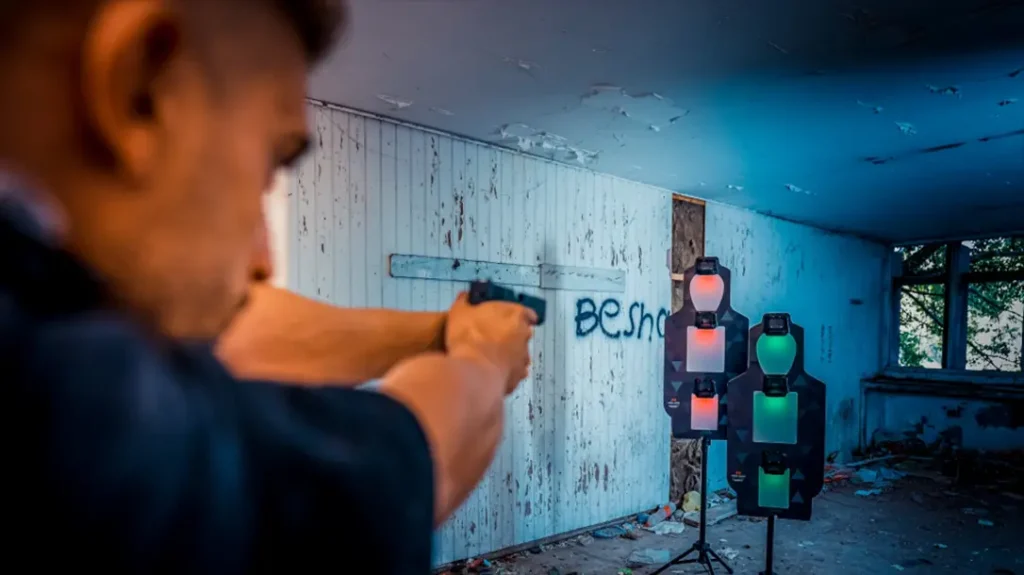The U.S. Army has completed the final round of field testing for its new body armor, the Modular Scalable Vest.
The Modular Scalable Vest is part of the Army’s Soldier Protection System (SPS), which is the service’s next-gen Personal Protective Equipment (PPE) system. The SPS—according to the U.S. Army Acquisition Support Center’s website—is a modular, scalable system built to defeat threats at a lighter weight than the current PPE.
- RELATED STORY: Buyer’s Guide to Body Armor and Plate Carriers
According to the press release, the last testing phase involved soldiers with the 71st Ordnance Group (Explosive Ordnance Disposal) and 10th Chemical Hazardous Response Company at Fort Carson, Colo. finishing a series of tasks while wearing the Modular Scalable Vest. These tasks included negotiating an obstacle course, weapons training, don and doffing procedures, tactical vehicle access capabilities and a ruck march.
Advertisement — Continue Reading Below
“We have been working on this vest for the past five years and have since have gone through four versions of the vest and an additional two versions of the Soldier plate carrier system,” said Stephen McNair, test manager for Project Manager Soldier Protection Individual Equipment, a division of Program Executive Officer Soldier at Fort Belvoir.
The Modular Scalable Vest is based on the modular design of the Improved Outer Tactical Vest, which made its debut in 2008. But that vest’s pouch attachment ladder system has been replaced by a rubber-like material with laser-cut slots. This lets soldiers attach critical gear to the vest while reducing weight, the service says.
The new vest weighs in at 11 pounds, based on a medium size vest with no ballistic plates. When fully configured, the Modular Scalable Vest weighs in at around 25 pounds, which is five pounds lighter than the Improved Outer Tactical Vest.
Advertisement — Continue Reading Below
“Compared to my IOTV, this vest is lighter and cooler, has a greater range of motion, and a better fit,” said 1st Lt. Dawn Ward, a platoon leader with 663rd Ordnance Company who was the officer in charge during evaluations. “It is a huge improvement over previous body armors.”
In addition to being lighter in weight, the vest is scalable via a four-tier system that enables the end user to tailor to mission-specific requirements. The first tier lets the wearer pull out the inside soft armor and use it as concealable body armor. The second tier is the soft armor with plates. The third tier is the vest with ballistic plates and soft armor. The fourth and final tier is the addition of a ballistic combat shirt that boasts built-in neck, shoulder and pelvic protection, as well as a belt system to allows soldiers to relocate what they affix to their vest to their hips.
Spc. Isaac Bocanegra, an EOD technician with 764th OD CO, gave the thumbs up to the Modular Scalable Vest’s ballistic combat shirt due to the fact that it gives him more range of motion.
Advertisement — Continue Reading Below
“I currently wear the IOTV about twice each day and it is quite a bit heavier than this body armor,” said Bocanegra. “Having this new body armor would make my job so much easier,” he added in the press release.
The Improved Outer Tactical Vest’s quick-release feature for removal during emergencies is retained in the Modular Scalable Vest, but with a simpler and interchangeable design, the Army says. Rather than using a single pull-tab, the vest has a buckle system that can be used in three different ways: left shoulder, right shoulder or both.
The Army says more sizing options allows the Modular Scalable Vest to be more tailorable to different body types.
Advertisement — Continue Reading Below
- RELATED STORY: PHOTOS – US Army Tests Sig Sauer P320 MHS at Fort Bragg
“I have an extra-small because it positions the plates where I need them to be and it has a tighter fit for me,” said Spc. Hannah Carver-Frey, a chemical, biological, radiological, nuclear specialist with 10th Chemical Hazardous Response Company, said in the press release.
McNair—who was on-site at Fort Carson for the week-long tests between Oct. 16-20—said that once the evaluation is complete, the new vest will go into production and be fielded by the summer of 2018.


























